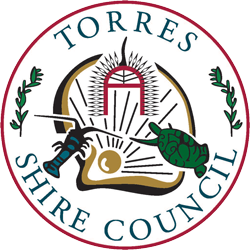About the Torres Strait
The Torres Strait is divided into five major island clusters, the Top Western Group (Boigu, Dauan and Saibai), the Near Western Group (Badu, Mabuiag and Moa), the Central Group (Yam, Warraber, Coconut and Masig), the Eastern Group (Murray, Darnley and Stephen), and the TI Group (Thursday, Horn, Hammond, Prince of Wales and Friday). This also includes the five aboriginal and islander communities (Bamaga, Seisia, Injinoo, Umagico and New Mapoon), on the Northern Peninsula Area of Cape York.
Three dialects: Kala Kawa Ya (Top Western and Western), Kala Lagau Ya (Central) and Meriam (Eastern) predominate with the ‘Creole’ language that emerged after the arrival of the missionaries. The Torres Strait is the body of water between Australia and Papua New Guinea where the Pacific and Indian Oceans meet and where there are 133 islands, sandy cays and rocky outcrops of which 38 are inhabited. The population of the Torres Strait at the last Census (2011) totalled 7490 people.
The Torres Strait is culturally unique and whilst it is Australian, it is different from the surrounding areas of Papua New Guinea, Asia and the Pacific. A multicultural society has emerged from the history of beche-de-mer fishing and mother-of-pearl and trochus shell industries with the influx of Asian and Pacific Island traders. The fishery of the Torres Strait with the exception of trochus shell continues today and Waibene exemplifies the multiculturalism of the Torres Strait where people of many races and nationalities live and work harmoniously.
As the only part of Australia with an active international border and where the neighbouring country is visible from the shoreline, the Torres Strait has gained a strategic focus from Commonwealth and State governments. The issues of customs, quarantine, immigration and defence are administered daily from Waibene within a treaty that also maintains traditional cultural and trade ties between Papua New Guinea and the people of the Torres Strait.
